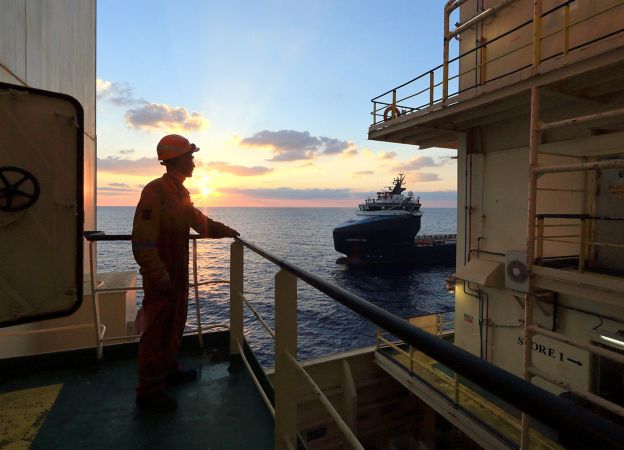
Experimental geosciences, the subsurface under the microscope
Our laboratories are equipped with increasingly advanced instrumentation for the analysis of rock samples from the subsurface.
We use the best exploration technologies to locate the most promising resources and bring them rapidly into production.
We are continually investing to stay at the forefront of subsurface data acquisition, management and interpretation. Only by improving our knowledge in geology and geophysics, integrating them and developing models derived from these disciplines can we deepen and accelerate our understanding of the subsurface, thus optimising the operational and economic risks associated with our activities and reducing our impact on the environment.
The continual updating of theoretical knowledge in the geosciences, coupled with the ever-increasing use of digital technologies, will significantly improve the efficiency and safety of work flows applied to subsurface analysis, not only applied to traditional exploration, such as the identification of new gas fields, but also to activities supporting the energy transition, such as the identification and management of CO2 storage sites, as well as the exploration of geothermal sites, hydrogen deposits and critical minerals.
Fundamental to this are the experimental geosciences, a set of disciplines in geology aimed at rebuilding the structure of underground rocks where hydrocarbon reserves may be present. Their valuable contribution is constantly complemented by digital geosciences, which are supported by our supercomputer. These disciplines are also applied in carbon capture and storage.
Thanks to the skills and technologies of our Research Centres, we are able to identify new natural gas deposits more precisely and efficiently.

Our laboratories are equipped with increasingly advanced instrumentation for the analysis of rock samples from the subsurface.

Using HPC5, our researchers can understand the subsurface in an increasingly precise and safe way.
The study of the subsoil is based on basic theoretical knowledge that applies to both traditional and energy transition objectives. Discovering the age of underground rock formations, studying their composition, porosity and permeability, as well as reconstructing the geometry, extent and volume of sedimentary bodies and the palaeoenvironmental conditions in which they were formed, are fundamental when it comes to understanding the nature and characteristics of reservoirs to extract natural gas from or to be used for the storage of CO2.
Besides using up-to-date theoretical skills and modern, purpose-built integrated workflows, our technicians have access to the use of technology and sophisticated analysis tools that enable them to study the data extracted from the subsoil in depth and optimise results.
Last but not least, studying surface geology, by surveying campaigns of outcropping rocks or through the use of digital acquisitions of the earth's surface, allow us to obtain essential data to support geological modelling activities, as well as monitoring the sites where we operate (environmental studies). Owning advanced proprietary technologies that enable large amounts of high quality data to be acquired and processed is therefore crucial to increasing our ability to predict the variability of subsoil rocks.
Progress in technology and digital technologies, in particular, have made it possible to significantly increase the performance of experimental activities, such as laboratory analyses. Modern machine learning and artificial intelligence methodologies also offer the possibility of optimising how proprietary databases are managed and integrated with the data available in public databases or traceable to specialised literature. The increase in the robustness of three-dimensional quantitative geological models also depends on the need to calibrate them to a large number of data that will be analysed and integrated in an ever shorter timeframe, in the face of an ever-increasing availability of information.
Latest results and growth targets in natural gas.
annual natural gas production in 2022
gas share in total O&G production by 2030
gas share in total O&G production by 2050
Our supercomputer allows us to expand geophysical exploration to quickly identify new natural gas fields.
The profound knowledge of the subsoil which, thanks to the geosciences we have gained through our Oil & Gas activities, proves invaluable in the field of capture, storage and utilisation of CO2 (CCUS). Studying and understanding the characteristics of underground rocks and the behaviour of fluids moving within them, in particular through the experimental geosciences, allows us to accurately assess the capacity to store carbon dioxide from depleted gas reservoirs. In this way, we can identify those that are best suited to host carbon capture and storage (CCS) facilities and, subsequently, we are able to manage their operation safely and efficiently.
Our projects for carbon capture, utilization and storage (CCUS), a set of technologies essential for reducing emissions.
Eni.com is a digitally designed platform that offers an immediate overview of Eni's activities. It addresses everyone, recounting in a transparent and accessible way the values, commitment and perspectives of a global technology company for the energy transition.
Discover our mission

